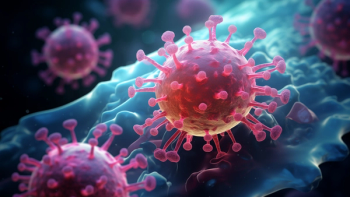
Pediatric, Veterinary Oncologists Call for More Comparative Research
Dogs and kids both spontaneously develop a number of cancers, making it a no-brainer for those on both sides of the disease to work together in finding new therapies.
For most people, there isn’t an immediate connection between pediatric and canine cancer-unless you’re an oncologist, or researcher, who works in either of these fields. Then, the similarities are striking.
Pediatric and canine cancer doctors, researchers, health advocates, government officials, and pharmaceutical leaders gathered last month in Washington, D.C. at the first Paws for a Cure Summit, presented by the Canines-n-Kids Foundation, to talk about how they can better work together-in and outside the lab-so that advances can be made in both disease areas.
It was very apparent that those working on both sides of the disease felt a disconnect from other areas of oncology research, funding, and support. In fact, the overall sentiment was that while many large pharma companies have animal health divisions, sometimes even housed in the same building, there is an enormous divide.
As a result, they called on more collaborative efforts within pharmaceutical companies and research institutions. Typically, the human and animal health sides are studying separate molecules. But, as they explained, there are many times that a human molecule could help the animal health side, and vice versa. At the very least, there should be better communications when it comes to comparative research and medicines.
The surprising thing is that the disconnect isn’t just with those outside the field of oncology.
“Wait, dogs get cancer? And people pay to treat them?” recalled Dr. Matthew Breen, of the North Carolina State School of Veterinary Medicine, while relaying what becomes a common reaction from other oncologists and doctors.
Another common question veterinary oncologists tend to receive from other oncologists is this: “How do you inject the dog with the cancer?”
This brought up an important point that was repeated over and over again throughout the day:
Dogs and kids both spontaneously develop a number of cancers, including bone cancer, certain brain and central nervous system cancers, and lymph and blood cancers. Because of this, studying canines with cancer can be extremely beneficial, and could lead to a pediatric cure, or at the very least, better treatments.
“Humans and dogs, we are all animals, just packaged in a different way,” said Breen, mentioning the One Health Intitative. “The keys to unlocking some of cancer’s most pressing questions are walking right beside us often with four legs, sometimes with three.”
Doctors and researchers made it very clear that the pure genetic similarities between humans and dogs make canines with cancer worth studying. In fact, 84% of dog DNA has human counterparts, according to The Genomics Institute. This means humans and dogs suffer many of the same diseases, including most cancers.
One speaker went as far as saying that mice, which need to be injected with the cancer before studying them, are useless when it comes to finding successful treatments.
Studying canines with cancer can be very challenging, however, especially when it comes to clinical trials and testing new therapies. Unlike on the human side, in animal health, the veterinarian is a one-person clinical trial show.
The veterinary oncologist not only recruits the patients, they print out the consent form, collect the tissue samples, mix the drug, administer the therapy, and analyze the results. This can drain resources very quickly.
Money and funding also becomes an issue. Think about this: The animal health insurance industry is still in its infancy, and many plans don’t cover cancer treatments. When a dog gets diagnosed with cancer, a majority of owners have to pay out of pocket, and as a result, they forego expensive treatments, because they can’t afford them. When a human gets cancer, a majority of the time insurance kicks in to cover thousands of dollars’ worth of treatments.
From a strictly business point of view, it can be difficult for the animal health side to get funding for research. And, when they do, they may make a great discovery, but the expense to create the drug for animals may not be a wise business decision. This is where comparative medicine and the push for better communication comes into play, as many of those at the Summit believed that if it works in dogs, it could have potential to help humans, especially children.
Newsletter
Lead with insight with the Pharmaceutical Executive newsletter, featuring strategic analysis, leadership trends, and market intelligence for biopharma decision-makers.




